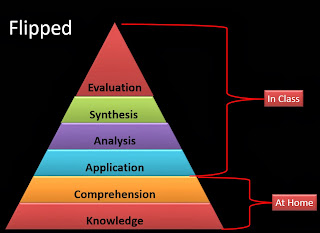When I’m already get used to traditional classroom,
this flipped classroom approach surprises me with its creative idea of language
teaching. Unlike the old classroom that ask students to do homework at home, flipped
classroom does homework and activities during the class time instead, aims to improve
students’ critical thinking ability with them interacting with peers and
teachers. The two articles talk about flipped classroom approach mainly for
ELs, but I think this approach works for other foreign language learning/teaching
also, and I’ll definitely bring it to my Chinese teaching classroom in the
future.
Pinyin and radical, it’s hard to increase learners’
comprehension because it usually takes very long time of them to remember words’
pronunciation and tones, and how to write down radicles in right order, so if I
teach these during my class time, it would take me hours and hours to give
presentation based on my old experiences. However, flipped classroom helps me
solve this problem easily by switching teaching and learning scenarios. I can
make a teaching demonstration video and ask learners to watch them at home, so
they would have enough time to either make charts or draw pictures or whatever
methods they would like to use to help them remembering differences among
Pinyins and radicals.

I am so excited by how much you internalized these articles and really thought about how to apply them to your own individualized teaching needs. I think it is great that you didn't just write a generic review of the articles but that you really took the time to think about how it would impact your learners, especially given the specific needs of Chinese language learners. I also like your points about differentiation and cooperative learning. I think this is a fantastic way to look at an article and then use it for your best benefit.
ReplyDelete